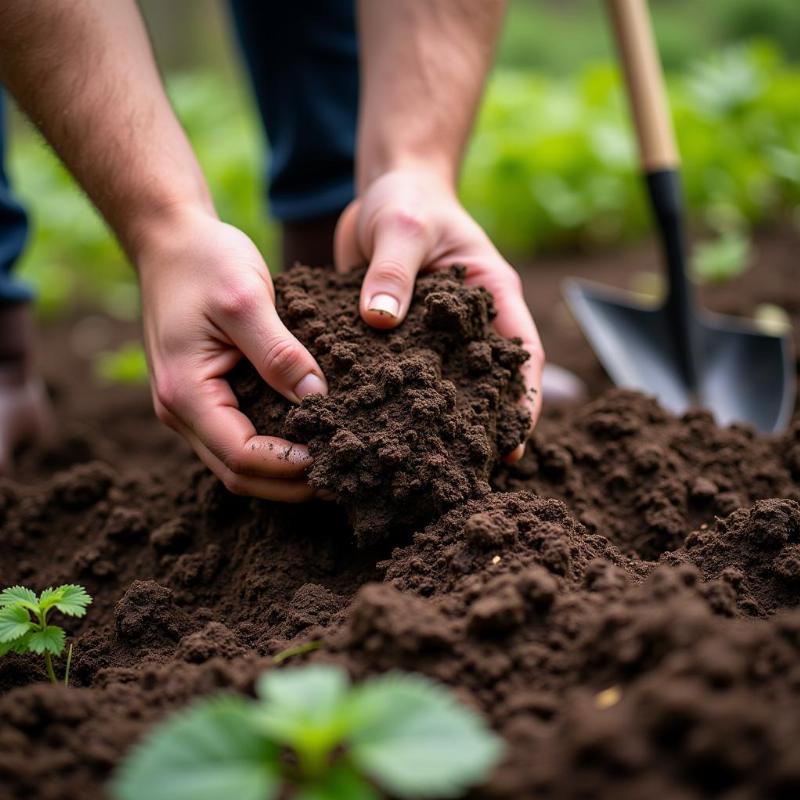Choosing the right grass seed for dog areas is crucial for maintaining a healthy, vibrant lawn that can withstand the wear and tear of playful paws. This involves selecting a durable grass species, preparing the soil properly, and implementing sustainable maintenance practices. By following the expert advice in this guide, you can create a lush, dog-friendly lawn that both you and your furry friend will love.
Choosing the Right Grass Seed for Your Climate
Selecting the right grass seed is the first step to creating a dog-proof lawn. Consider your local climate and the amount of sunlight your yard receives. Cool-season grasses like Kentucky Bluegrass, Fine Fescue, and Ryegrass thrive in northern climates, while warm-season grasses like Bermuda, Zoysia, and Centipedegrass are better suited for southern regions. These resilient species can withstand heavy foot traffic and are less likely to develop bare patches. Choosing native grass varieties can also be beneficial, as they are adapted to local conditions and often require less maintenance.
Understanding the Different Grass Types
Different grass types have varying levels of durability and maintenance requirements. Kentucky Bluegrass is known for its rich green color and ability to self-repair, making it a popular choice for dog owners. Fine Fescue is shade-tolerant and low-maintenance, while Ryegrass is a fast-growing option for quick coverage. For warmer climates, Bermuda grass offers excellent wear resistance, while Zoysia grass forms a dense, weed-suppressing turf.
Preparing the Soil for Planting
 Preparing the Soil for Planting
Preparing the Soil for Planting
Before sowing your chosen grass seed, proper soil preparation is essential. Test your soil’s pH and amend it as needed. Most grasses thrive in slightly acidic to neutral soil (pH 6.0-7.0). Remove any rocks, debris, and existing weeds. Loosen the soil to a depth of about 6-8 inches to encourage root growth. Adding a layer of compost or topsoil can improve drainage and provide essential nutrients for healthy grass development.
Ensuring Proper Drainage
Proper drainage is critical for a healthy lawn, especially in areas frequented by dogs. Compacted soil can lead to waterlogging, which can damage grass roots and create muddy patches. Consider adding organic matter, such as compost or peat moss, to improve soil aeration and drainage. You can also consider installing French drains or other drainage systems if your yard has poor natural drainage.
Maintaining Your Dog-Friendly Lawn
Once your new grass is established, proper maintenance is key to keeping it healthy and resilient. Water deeply and infrequently to encourage deep root growth. Use a natural, pet-safe fertilizer to provide essential nutrients without harming your furry friend. Regularly clean up pet waste to prevent brown spots and maintain hygiene. Consider overseeding in the fall or spring to thicken the lawn and fill in any bare patches.
Conclusion
Creating a dog-friendly lawn requires careful planning and maintenance. By choosing the right grass seed, preparing the soil properly, and implementing sustainable lawn care practices, you can achieve a beautiful, resilient lawn that both you and your canine companion can enjoy. Remember to prioritize pet-safe products and practices to ensure your dog’s health and well-being. best lawn seed for dogs can offer more specific recommendations.
FAQ
- What is the best grass seed for high-traffic dog areas? Kentucky Bluegrass, Bermuda grass, and Zoysia grass are known for their durability and ability to withstand heavy foot traffic.
- How often should I fertilize my dog-friendly lawn? Fertilize every 6-8 weeks during the growing season with a pet-safe fertilizer.
- How can I prevent my dog’s urine from burning my lawn? Water the area immediately after your dog urinates to dilute the nitrogen. You can also train your dog to use a designated potty area.
- What are some natural ways to control weeds in a dog-friendly lawn? Hand-pulling weeds, using corn gluten meal as a pre-emergent herbicide, and maintaining a healthy, dense lawn can help control weeds naturally.
- How can I repair bare patches in my dog-friendly lawn? Overseed the bare patches with the same type of grass seed and keep the area moist until the new grass establishes. most durable grass for dogs might help you choose the best type for your lawn.
- Is there a way to fix a muddy yard caused by dogs? Yes, check out how to fix muddy yard with dogs for some helpful tips.
- What is the best fertilizer for lawns with dogs? Look for natural lawn fertilizer safe for dogs that won’t harm your pets.
Beautdogs.us is your premier source for all things dog-related in the US. We offer expert advice on dog breeds, care, and products, catering to both new and experienced dog owners. best grass for big dogs is a great resource for owners of larger breeds. Connect with us for personalized guidance to create the perfect environment for your furry friend. Contact us at [email protected] or call us at +1 501-555-7529. Beautdogs.us is your trusted partner in providing comprehensive dog care.